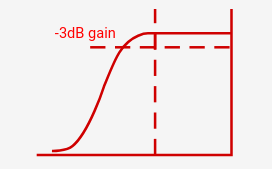fmeili1
Solar Enthusiast
After some research, it looks like that the problem with LED pulsing/flickering is well known. It's seen on nearly all brands and models of HF pure sine off-grid inverters.
I'm trying to fundamentally understand the problem and find possible solutions. Here are some of my thoughts.
Let's assume that
Here are some observations which I've googled and some of them, I've observed by myself.
But I still hope that there may be possible solutions to solve or at least reduce the root cause of the LED pulsing. Maybe there could be a specific type of filter installed in the power line to the "dirty" loads to reduce the oscillating interaction between the inverter and the load.
I've made a simple test with a self made online double conversion UPS which I've connected between the receptacle and the "dirty" loads which interfere with the inverter to make them pulse. In my case an old slot machine and a 3D printer. In both cases the LED pulsing was completely gone after decoupled the dirty load from the inverter (via this UPS). But this is not really a solution because it's too expensive to isolate any "dirty" load with it's own online double conversion UPS.
To find a good filter (if possible) to reduce the interferences between a "dirty" load and an inverter, I think it's necessary to understand the nature of the distortion/oscillation problem.
I've already tried two simple filters (filter1, filter2) but both showing no positive effect about this problem.
My theoretical electrical knowledge is a bit rusty, maybe someone could shed some light in this problem and possible (filter) solutions. I think first it's required to understand the nature of the "noise" (oscillating) before a possible filter type may be selected.
In this graphic you can see the visual difference in SA of the output voltage with the dirty load enabled and at about 9:50am without the dirty load (from 9:50am the LED's don't flicker anymore). SA is not really the right tool here, because it's way too slow to "see" all fast voltage fluctuations - but even here it's visible and I guess with a higher time resolution it would show it much worse.

I'm trying to fundamentally understand the problem and find possible solutions. Here are some of my thoughts.
Let's assume that
- the inverters are not broken and working as designed
- the firmware is more or less finally optimized in regards of the PWM control loop to drive the H-Bridge
- the external wiring of the whole system is nearly perfect
Here are some observations which I've googled and some of them, I've observed by myself.
- The pulsing frequency is usually in the range of 3-7 Hz
- The pulsing gets worse if the inverters have low load and nearly disappears under high load
- A specific device (load) connected to the inverter may start or increase the LED pulsing (connected on the same phase). e.g. specific laptop power supplies, 3D printers, etc. Without using these 'dirty' loads, there is nearly no LED pulsing
- Some are able to hide the LED pulsing by using "better" LED bulbs - this workaround is not a possible for all these fixed build in LED's in a house, e.g. in ceiling fans, etc. In general, this is not a solution, just a workaround because the inverter still produces pulsing on it's AC output
- If LED's are dimmable, the pulsing gets worse if they are dimmed down
- ...
But I still hope that there may be possible solutions to solve or at least reduce the root cause of the LED pulsing. Maybe there could be a specific type of filter installed in the power line to the "dirty" loads to reduce the oscillating interaction between the inverter and the load.
I've made a simple test with a self made online double conversion UPS which I've connected between the receptacle and the "dirty" loads which interfere with the inverter to make them pulse. In my case an old slot machine and a 3D printer. In both cases the LED pulsing was completely gone after decoupled the dirty load from the inverter (via this UPS). But this is not really a solution because it's too expensive to isolate any "dirty" load with it's own online double conversion UPS.
To find a good filter (if possible) to reduce the interferences between a "dirty" load and an inverter, I think it's necessary to understand the nature of the distortion/oscillation problem.
I've already tried two simple filters (filter1, filter2) but both showing no positive effect about this problem.
My theoretical electrical knowledge is a bit rusty, maybe someone could shed some light in this problem and possible (filter) solutions. I think first it's required to understand the nature of the "noise" (oscillating) before a possible filter type may be selected.
In this graphic you can see the visual difference in SA of the output voltage with the dirty load enabled and at about 9:50am without the dirty load (from 9:50am the LED's don't flicker anymore). SA is not really the right tool here, because it's way too slow to "see" all fast voltage fluctuations - but even here it's visible and I guess with a higher time resolution it would show it much worse.






